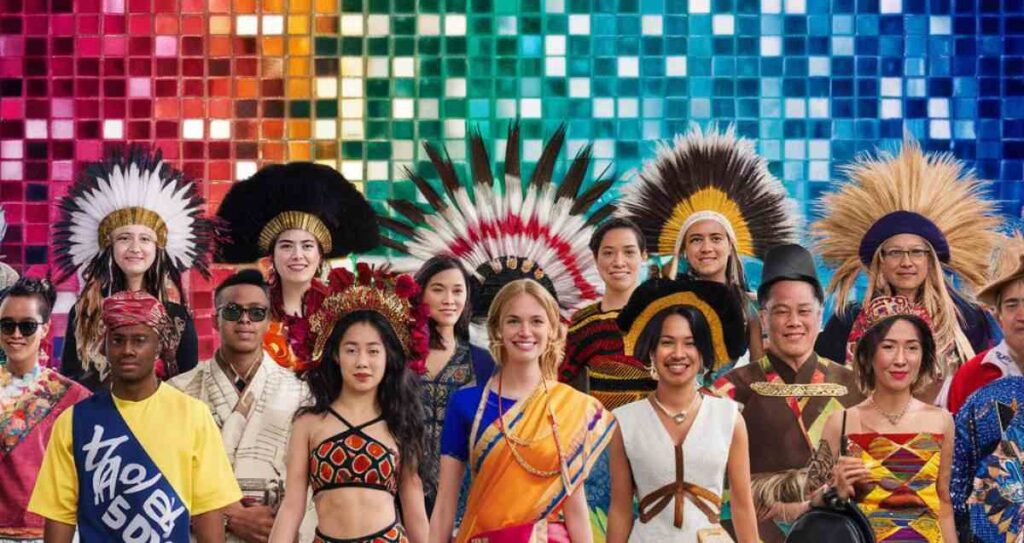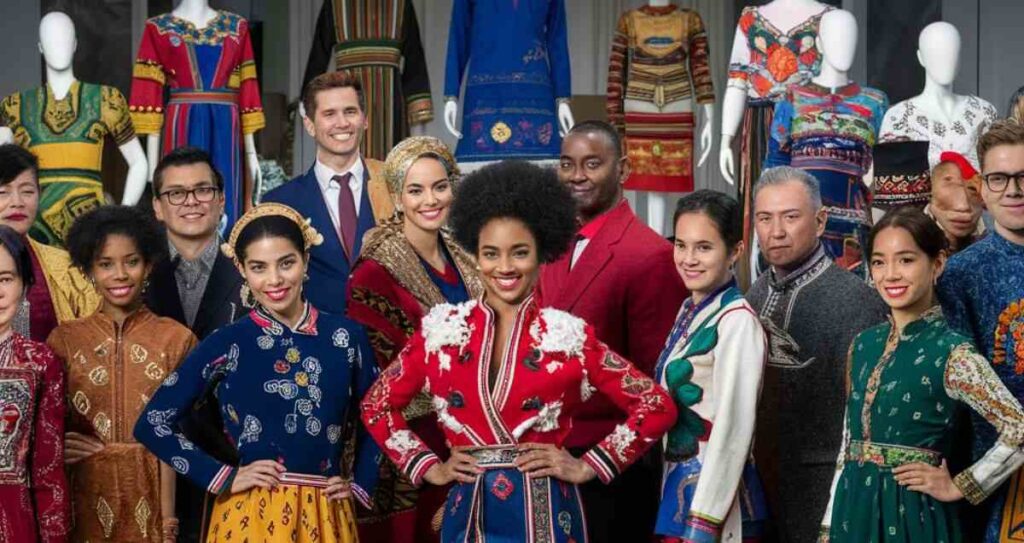Culture Clothing refers to attire that embodies the traditions, values, and artistry of a specific community. These garments often tell stories of history, identity, and regional pride, transcending mere utility to become powerful symbols of cultural expression.
Clothing isn’t just fabric; it’s storytelling. Culture Clothing connects us to our roots, reflects our environment, and expresses values that have stood the test of time.
Across the globe, Culture Clothing celebrates diversity and creativity. From Ghana’s vibrant kente cloth to Japan’s elegant kimono, each piece is a work of art. These outfits aren’t only for traditional settings—they’ve influenced modern fashion, fusing heritage with contemporary flair.
Exploring the World of Culture Clothing: A Window into Traditions and Identity

Culture Clothing is more than just fabric and fashion—it’s a vivid expression of history, identity, and tradition. Across the globe, clothing serves as a medium to celebrate heritage, communicate social values, and showcase the artistry of communities.
In this article, we’ll dive deep into what makes culture clothing unique, explore examples from diverse regions, and highlight how traditional garments continue to inspire modern fashion trends.
What is Culture Clothing?
Culture clothing refers to garments, accessories, and textiles that represent the traditions, values, and heritage of a particular community or region. These outfits are often steeped in symbolism, craftsmanship, and history, serving purposes far beyond utility.
For instance:
- Symbolism: Traditional Japanese kimonos often feature patterns that signify seasons or emotions, such as cherry blossoms for spring or cranes for longevity.
- Craftsmanship: Indian sarees like the Banarasi are handwoven with intricate gold and silver threads, symbolizing wealth and festivity.
- History: Many African tribal attires like the Maasai shuka or kente cloth narrate stories of ancestry and spiritual beliefs.
Culture clothing isn’t limited to traditional settings. Modern designers frequently draw inspiration from these styles, blending old and new to create pieces that honor heritage while appealing to contemporary tastes.
The Global Tapestry of Culture Clothing

Let’s take a closer look at some iconic examples of culture clothing from different regions of the world:
| Region | Cultural Attire | Key Features |
|---|---|---|
| Asia | Kimono (Japan) | Long, T-shaped robe with intricate patterns; tied with an obi belt. |
| Africa | Kente (Ghana) | Handwoven cloth with vibrant colors and geometric patterns representing values like peace or unity. |
| Europe | Dirndl (Germany/Austria) | A bodice, blouse, and apron ensemble, often adorned with embroidery. |
| Middle East | Abaya (Arab countries) | A flowing black robe, often styled with embroidery or modern cuts. |
| South America | Poncho (Andean regions) | A warm, woolen garment with bold, geometric patterns, used for both function and fashion. |
How Culture Shapes Clothing
Traditions and Rituals
Culture clothing is often tied to special occasions. Weddings, religious ceremonies, and festivals frequently require traditional attire to honor heritage.
- India: Brides wear red sarees or lehengas, symbolizing prosperity and fertility.
- West Africa: During celebrations, women wear gele (head wraps) and men don agbada robes, showcasing regal elegance.
Climate and Geography
The materials and designs of traditional clothing often adapt to the environment:
- Mongolia: The deel—a thick, warm robe—protects against harsh winters.
- Pacific Islands: Grass skirts and light cotton fabrics keep wearers cool in tropical climates.
Social Identity
Clothing can signify social status, marital status, or tribal affiliation. In many cultures, the colors, patterns, or accessories you wear tell a story.
- Scotland: Tartan patterns on kilts identify clans.
- India: The type of saree a woman wears can indicate her region and social standing.
Culture Clothing in Modern Fashion

Traditional clothing has found new life in modern fashion, where designers incorporate cultural elements into contemporary styles. This blending of old and new is not only a celebration of heritage but also a form of cultural preservation.
Key Trends in Culture-Inspired Fashion:
- Fusion Wear: Pairing traditional garments with modern cuts, like a crop top with a saree or a blazer made of kente cloth.
- Ethical Fashion: Supporting artisans who handcraft culture clothing, ensuring sustainability and fair trade.
- Cultural Prints: Designers use motifs like African wax prints, Japanese cherry blossoms, or Native American patterns in global fashion.
Why Culture Clothing Matters
Culture clothing is more than just attire—it’s a statement of identity, a bridge between past and present, and a celebration of diversity. When you wear or appreciate these garments, you’re participating in the story of a community.
The Impact of Culture Clothing:
- Cultural Appreciation: Understanding the origins and significance of clothing fosters respect for different traditions.
- Economic Empowerment: Supporting traditional artisans helps preserve skills and sustain local economies.
- Environmental Benefits: Many traditional clothes are made with natural dyes and sustainable fabrics.
Case Study: The Global Appeal of the Kimono
The kimono has transcended Japanese culture to become a global symbol of elegance. While it’s still worn in traditional ceremonies, modern adaptations like kimono-inspired jackets have entered everyday fashion worldwide.
Quote: “The kimono is a living art form that continues to evolve, reflecting the beauty and resilience of Japanese culture.” – Kyoto Kimono Museum
How to Incorporate Culture Clothing Responsibly

- Research the Origins: Learn about the meaning behind the attire to avoid cultural appropriation.
- Support Local Artisans: Purchase from makers who craft authentic pieces.
- Wear with Respect: Treat traditional garments with the dignity they deserve.
Conclusion
Culture Clothing is more than just attire—it’s a vibrant expression of identity, heritage, and tradition, connecting communities to their roots. From the intricate weaves of India’s sarees to the bold patterns of Africa’s kente cloth, these garments embody resilience, history, and creativity while continuing to inspire modern fashion through timeless artistry and contemporary styles.
Embracing Culture Clothing celebrates diversity and fosters respect for global traditions. It honors the past while ensuring its preservation for future generations. By wearing or appreciating these garments, we carry a piece of history and celebrate the beauty and richness of our shared humanity.
David Mark is a fashion aficionado and writer for Fashion Burst, where he delivers insightful content on the latest trends and style tips. With a keen eye for detail and a passion for all things fashion, David provides readers with expert advice and trend-setting ideas. His engaging posts help you stay ahead of the curve and refine your personal style with confidence and flair.
